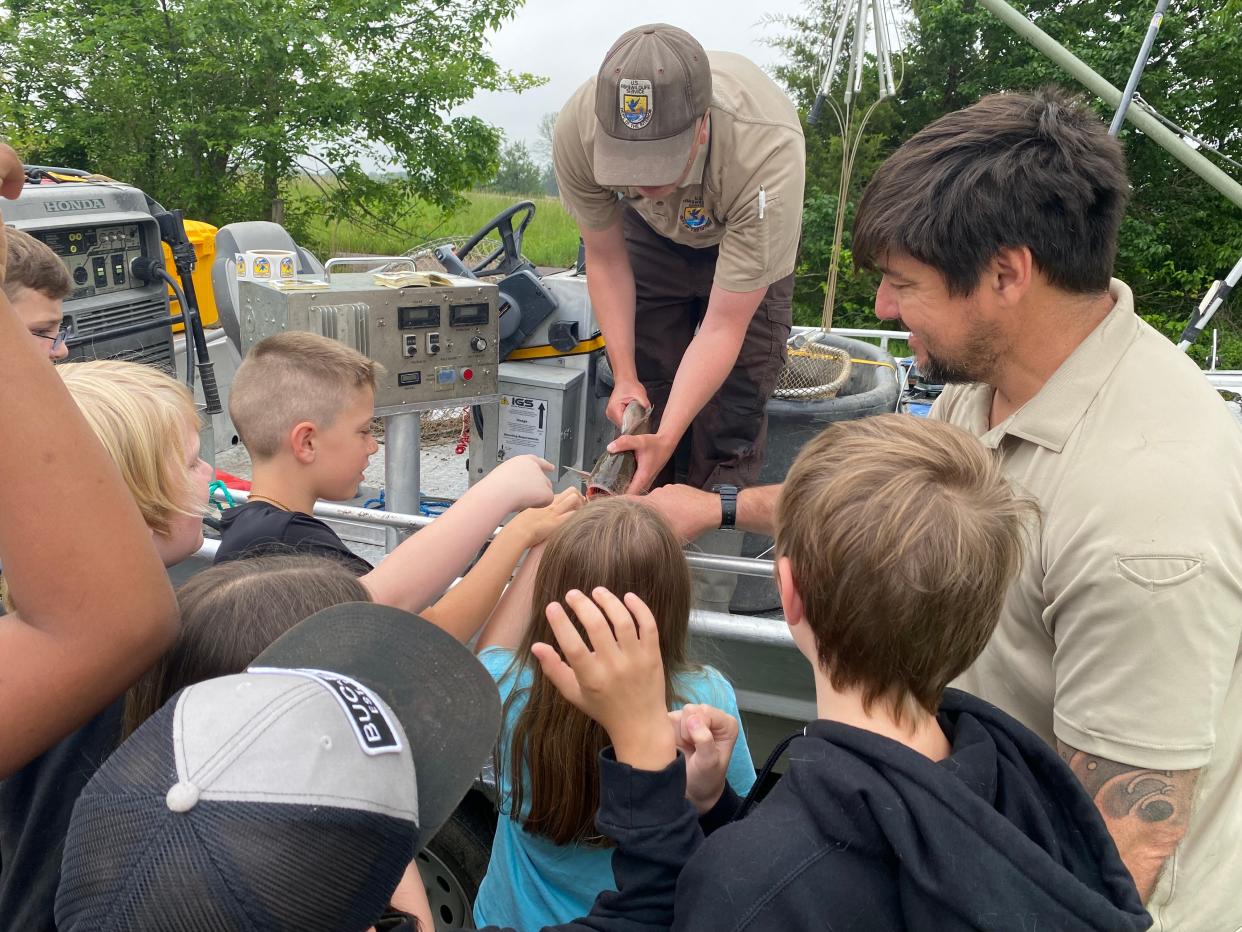Fish and Wildlife Service brings outdoor classroom to Two Mile Prairie elementary students

Squeals of delight and shouts of joy came from fascinated Two Mile Prairie Elementary School students on Wednesday as staff members from the U.S. Fish and Wildlife Service told them about their work and let them touch fish.
The school has among the district's highest student attendance rates and the highest annual performance report score. It focuses a lot on what is known as place-based learning, principal Amanda Ruyle has said.
Kevin Drews, fisheries biologist, and technicians Pablo Olerio and Austin McBee with the federal agency set up next to the school's pond for the outreach event.
McBee and Olerio showed the schoolchildren examples of native and invasive fish, allowing them to touch some of them.
"It's already in my nightmares," one student was overheard to say about a fish.
Oleiro explained an invasive fish in a way an elementary student might relate to it.
"It's like me going to your lunch and getting all your chicken nuggets," he said.
They showed an uncooperative grass carp that McBee described as "feisty."
"It has a prehistoric lung," Oleiro said. "When oxygen is low, it can gulp air."
"It's a very successful fish," McBee said. "That's why it hasn't changed for so long."
They also showed small-mouth buffalo from Perche Creek, a tributary of the Missouri River.
It feeds on the bottom of a river, McBee said.
"He's just going along on the bottom and sucking up anything and everything he can," McBee said.
Drews had fish from the Missouri River and fish from the Two Mile Prairie pond.
A shortnose gar was from the river.
"These fish are very slimy," Drews said. "Their slime coat acts as an antibiotic layer."
"If we only had that," a teacher said.
The fish would go back in the river later, he said.
He also showed off the agency's electro-fishing boat.

"We tune our electricity just right so it puts the fish asleep, but doesn't hurt them," Drews said.
The boat has a paupier trawl attached, Drews said, explaining paupier is French for butterfly.
Oleiro asked the students to raise their hands if they like math.
"We use a lot of math" with the fish, he said. "We weigh them. We count them."
Outreach to schoolchildren is very important, McBee said.
"These are the future generations," he said. "These are the people who are going to have my job someday."
It also helps fulfill the agency's mission statement to preserve and protect fish and wildlife for the American people, Drews said.
Roger McKinney is the Tribune's education reporter. You can reach him at rmckinney@columbiatribune.com. He's on X at @rmckinney9.
This article originally appeared on Columbia Daily Tribune: Two Mile Prairie students delight in fish study at school's pond
